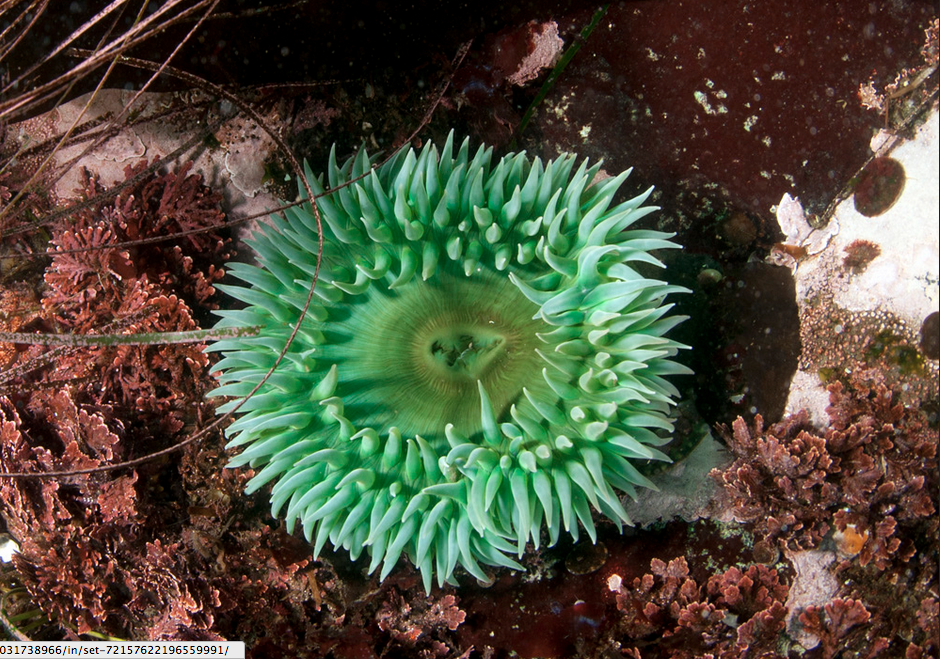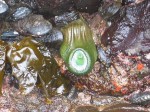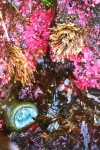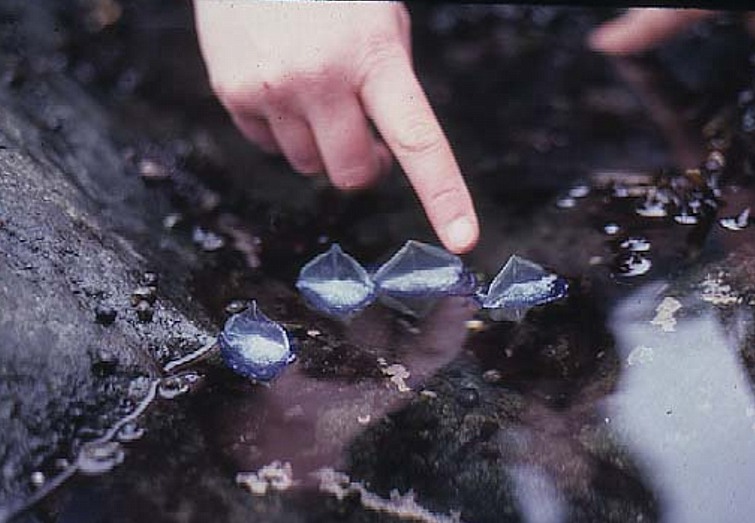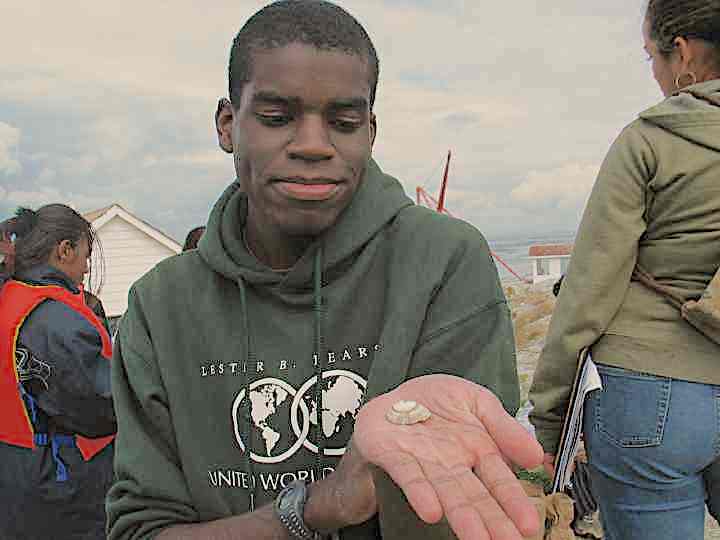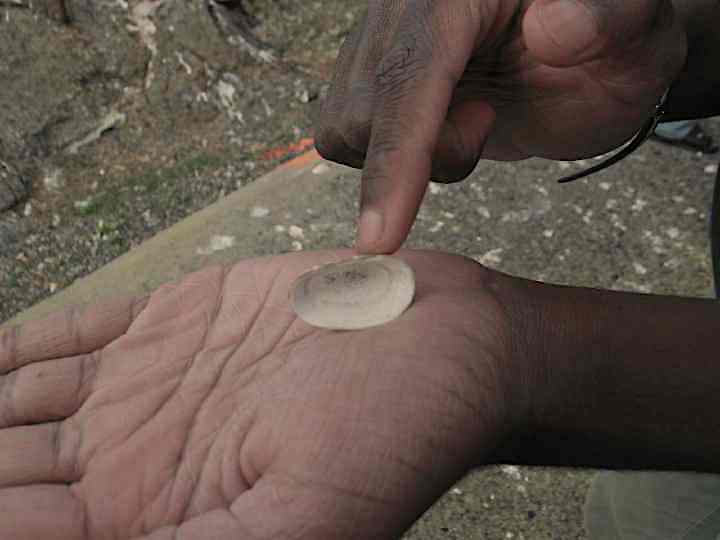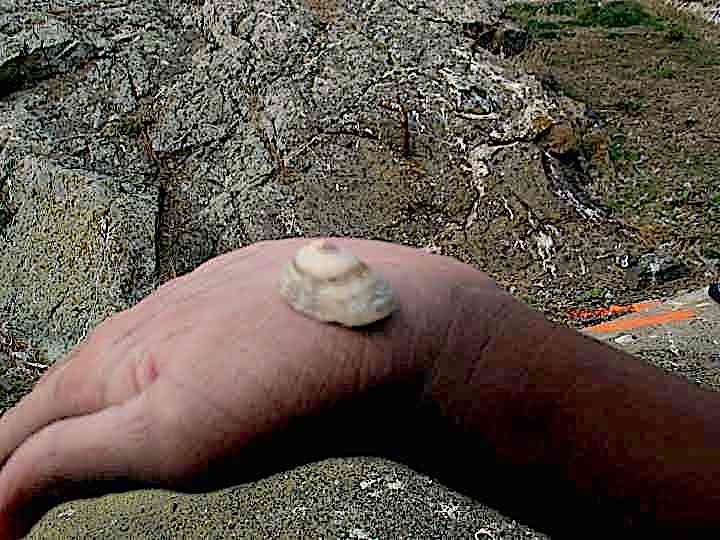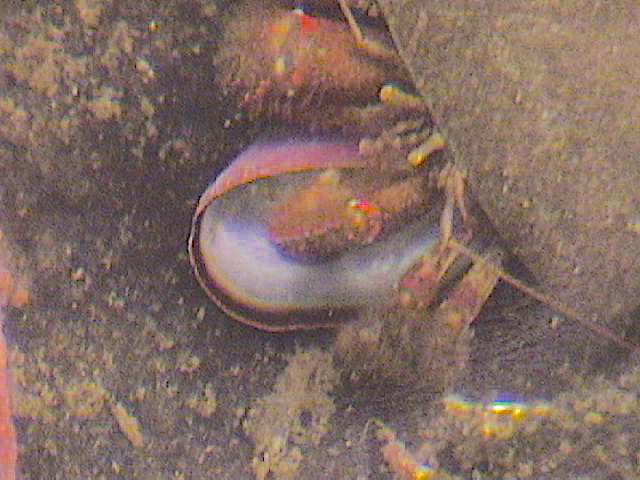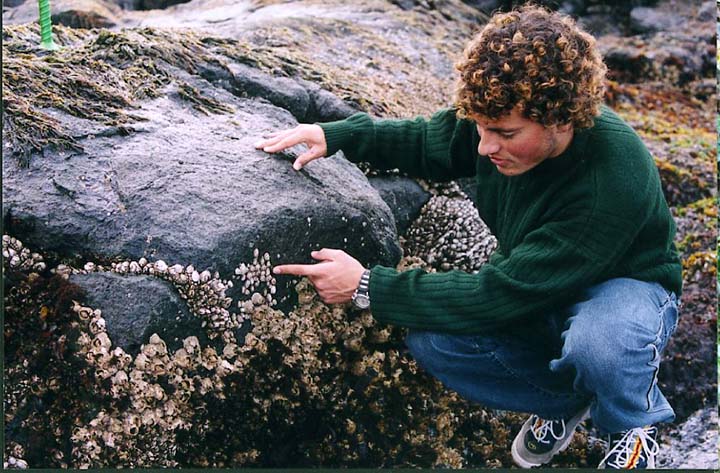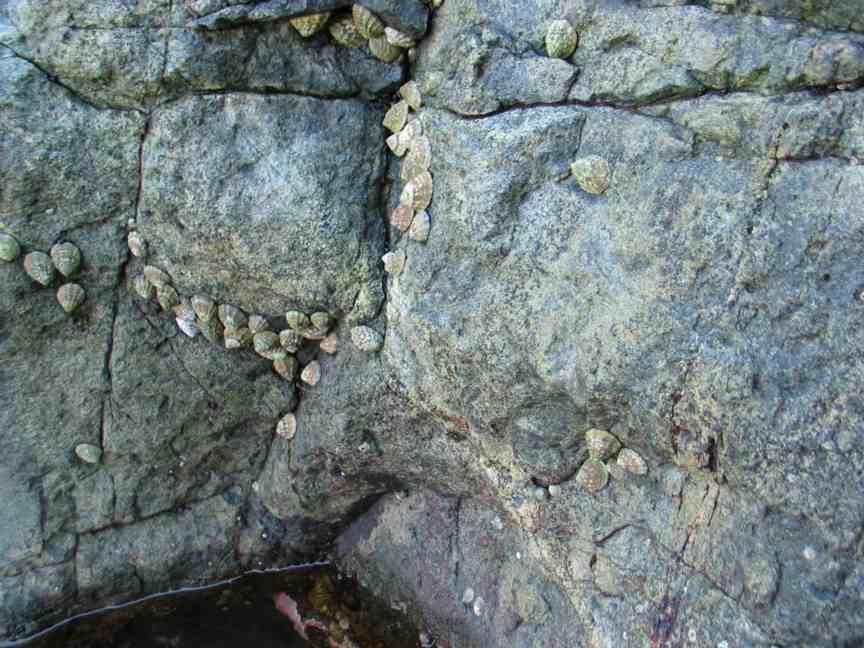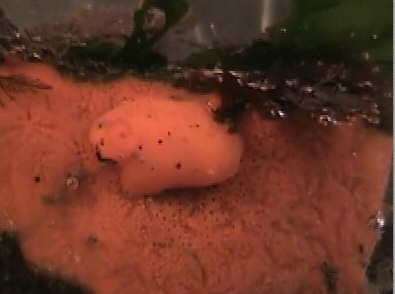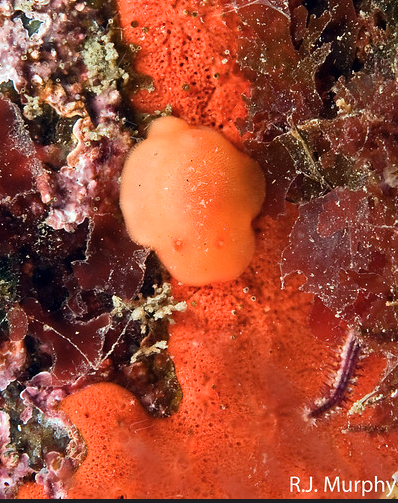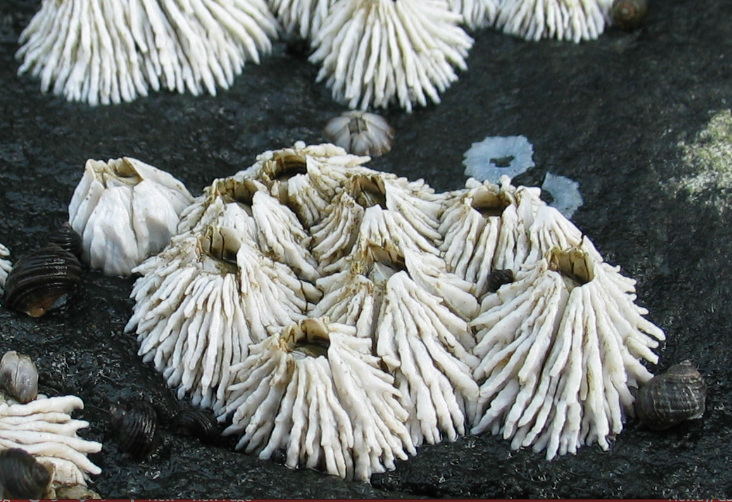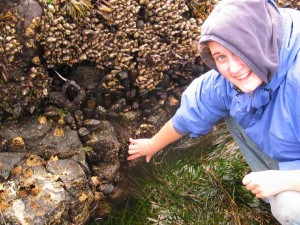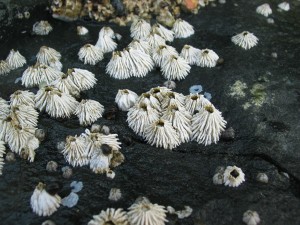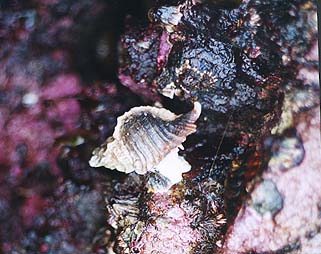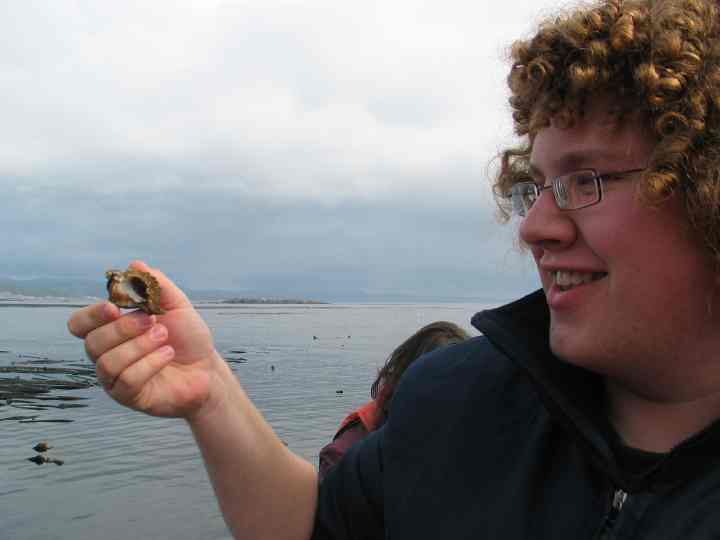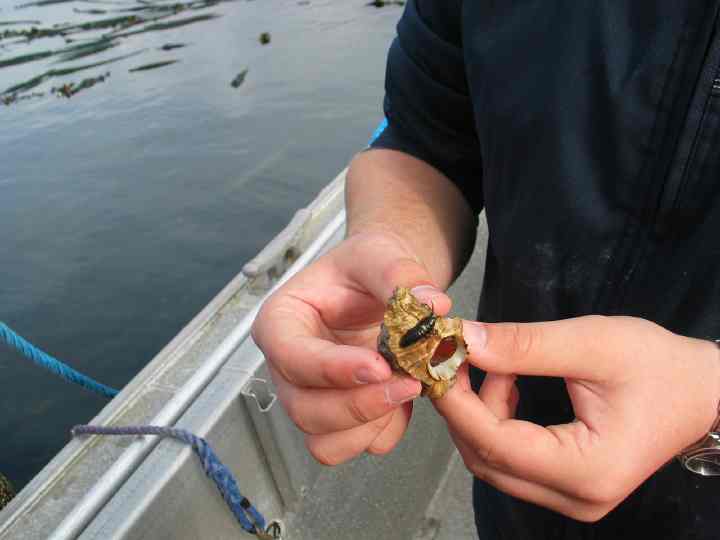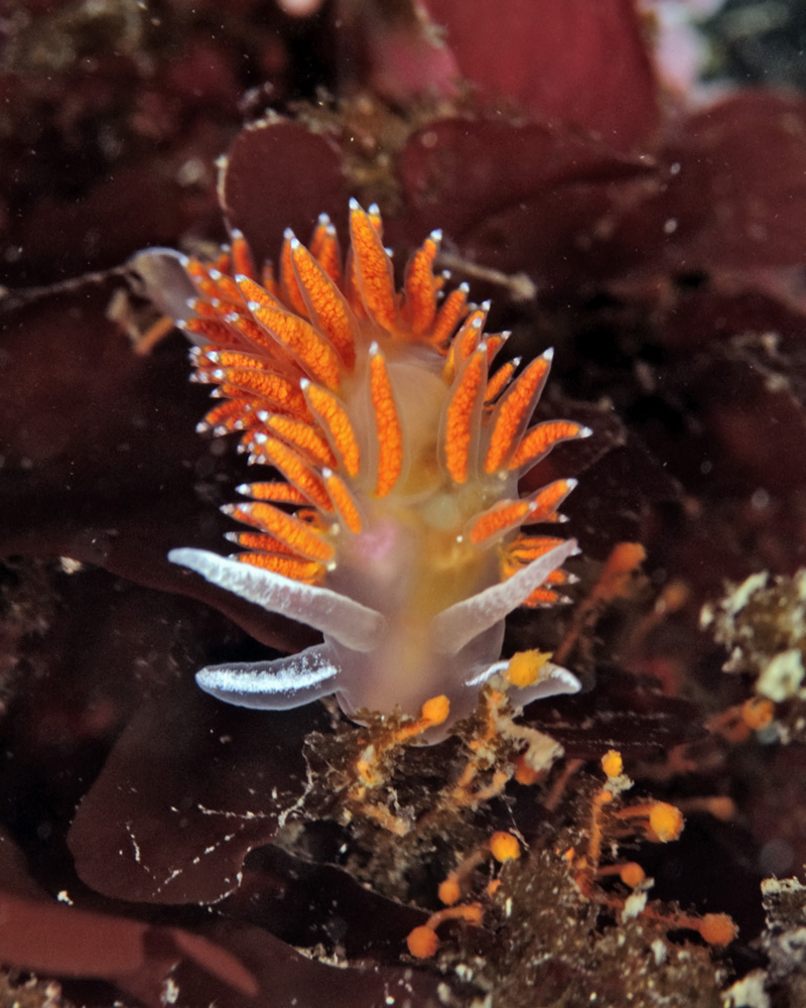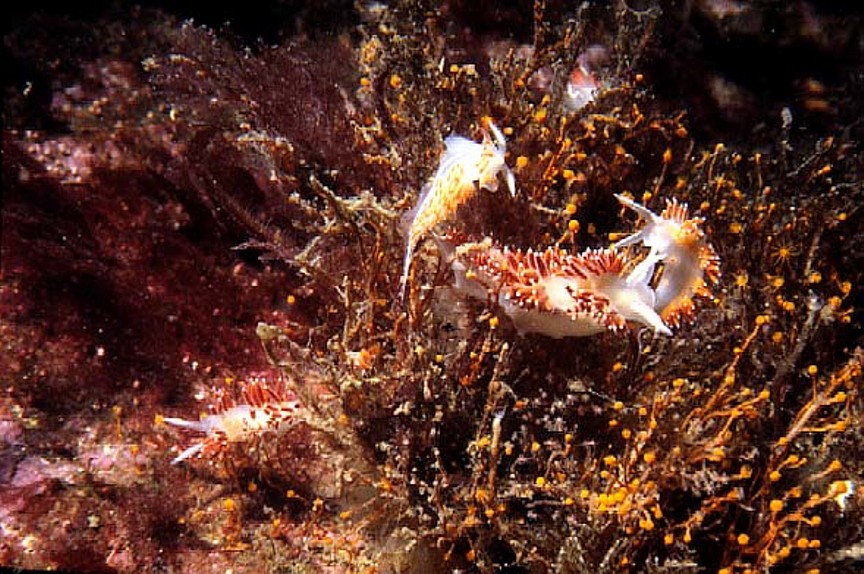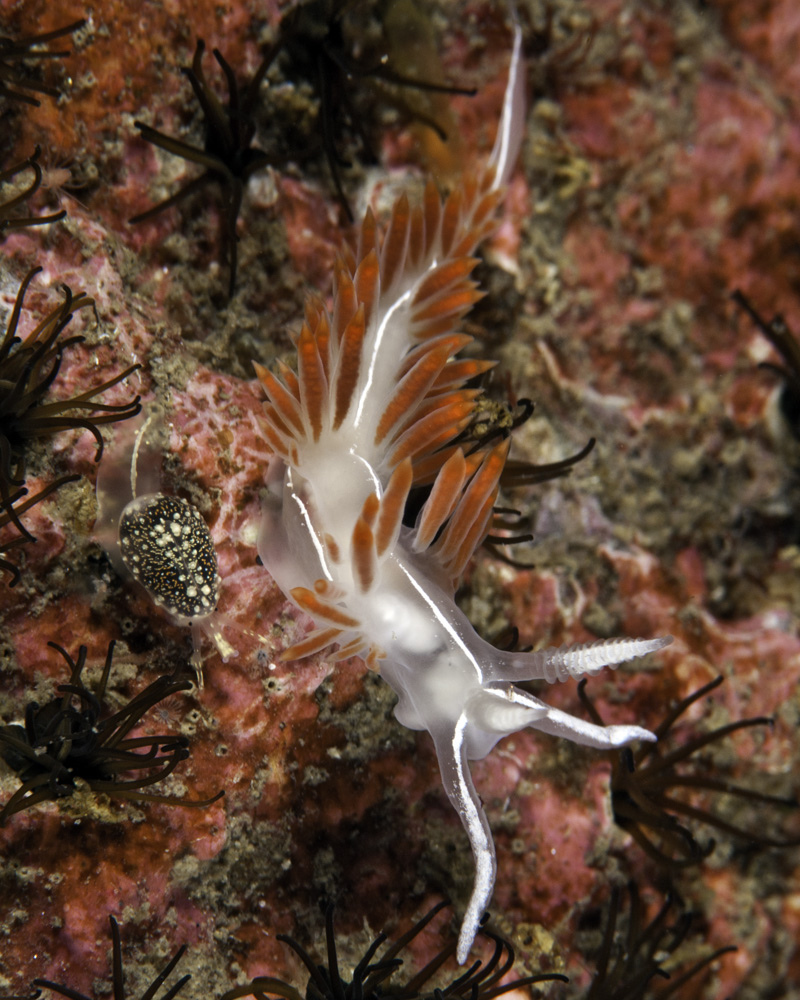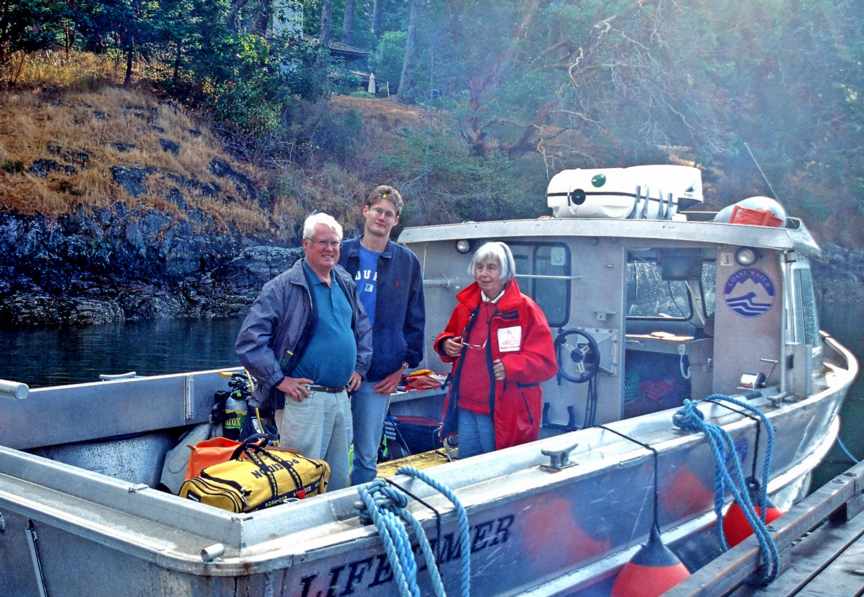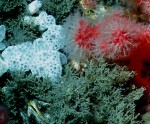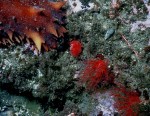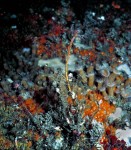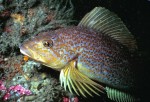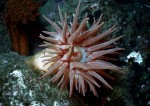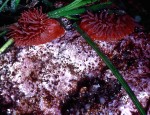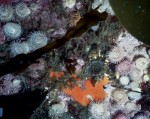Physical Description: As says its name, the Giant Green Anemone is the largest green anemone. The diameter of its column can easily reach 175 mm and its height, 300 mm. The column is covered with adhesive tentacles that are short and conical. The green color of the anemone changes, from bright green to a dark greenish brown.
Global Distribution: Anthopleura xanthogrammica lives in the tide pools along the Pacific coast. It can be found from Alaska to Panama.
Habitat: The Giant Green Anemone most likely lives on the rocks of tide pools, usually not deeper than 30 m. Also, it can be found in deep channels in exposed rocky shores.
- When the tide is out, anemones frequently relax and “droop”until disturbed or until the tide returns. This one is in the S.E.Surge Channel.
- 3 Anthopleura in the surge channel on the South West corner of Great Race
- At an extreme low tide on the West side of the island, one often finds this anemone in a community with a wide variety of organisms
Feeding: It eats with the help of thousands of nematocysts located on its tentacles. These paralyze the prey. Usually, the Giant Green Anemone feeds on detached mussels, crabs, sea urchins and small fishes.
Predators: This anemone can be eaten by crabs and sea stars, but its most common predator is the snail, which feeds on its tentacles or its column, and the sea spider, which feeds on its column.
Reproduction: To reproduce, Anthopleura xanthogrammica releases sperm and brownish eggs. When the larvae is formed, it swims or floats for a period of time and becomes dispersed. The reproduction of the Giant Green Anemone happens in late spring and summer
.
Interesting fact: Bright sunlight makes the green color of the anemone brighter by encouraging the algae that lives in its tissue to grow. But in the shade, the algae grows weak, making the anemone less colourful and more white in color. Also, a compound from Anthopleura xanthogrammica is now used as a heart stimulant.
| Domain | Eukarya |
| Kingdom | Animalia |
| Phylum | Cnidaria |
| Class | Anthozoa |
| Subclass | Zoantharia |
| Order | Actiniaria |
| Family | Actiniidae |
| Genus | Anthopleura |
| Species | xanthogrammica |
| Common Name: | Giant Green or surf anemone |
References:
Gotshall, Daniel W. Guide to marine invertebrates. Monterey : Sea Challengers, 1994.
Abbot, Donald P., Eugene C. Haderlie and Robert H. Morris. Intertidal Invertebrates of California. Stanford : Stanford University Press, 1980.
Giant Green Anemone. 1999. Monterey Bay Aquarium. 8 Nov 2005.
return to the Race Rocks Taxonomy gallery
|
This file is provided as part of a collaborative effort by the students , faculty, staff and volunteers of
Pearson College UWC |
Date: 2005 |
by Caroline Laroche, Québec year 32 |
